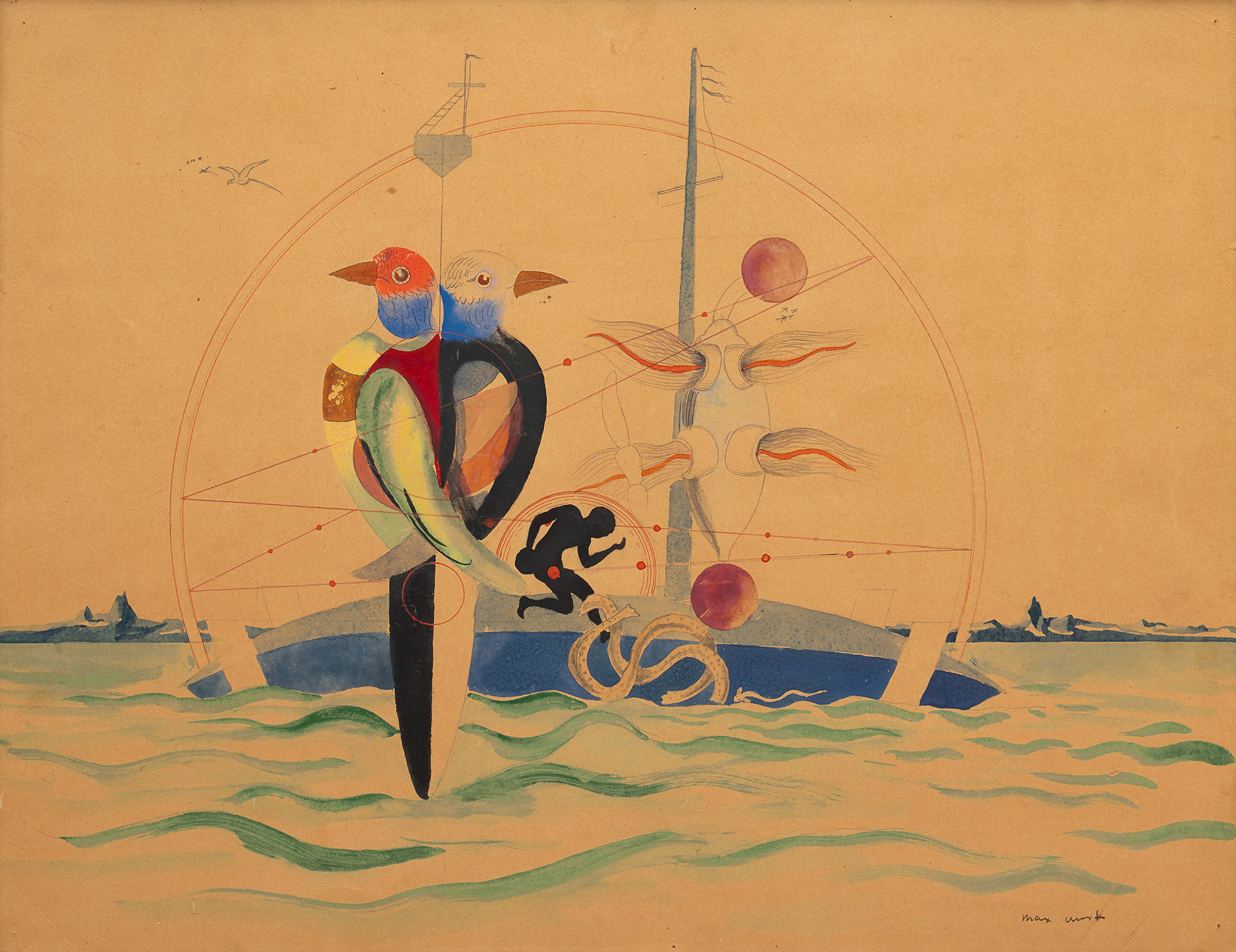

Maximiliana: Max Ernst from the Collection of Peter Schamoni
44
Max Ernst
Ohne Titel (les hommes ne le sauront jamais)
signed "max ernst" lower right
gouache, watercolor, pen and graphite on buff-colored paper
19 3/4 x 25 1/2 in. (50.1 x 64.8 cm)
Executed circa 1921.